How To Take Apart A Solar Garden Light
Solar garden lights are an eco-friendly, cost-effective way to illuminate outdoor spaces, enhancing the beauty and safety of gardens, pathways, and patios. These lights harness solar energy through photovoltaic panels to power energy-efficient LEDs, relying on components like batteries, photosensors, and wiring. Over time, these lights may require maintenance, repair, or repurposing, necessitating disassembly to access internal parts. Taking apart a solar garden light can seem daunting due to varying designs and construction, but with the right approach, it’s a manageable task. This article provides a comprehensive guide on how to disassemble solar garden lights, focusing on their components, common designs, and practical steps to safely access parts for repair, battery replacement, or creative repurposing. By combining technical insights, user experiences from platforms like Instructables and Reddit, and product-specific considerations, we offer a detailed roadmap for homeowners and DIY enthusiasts.
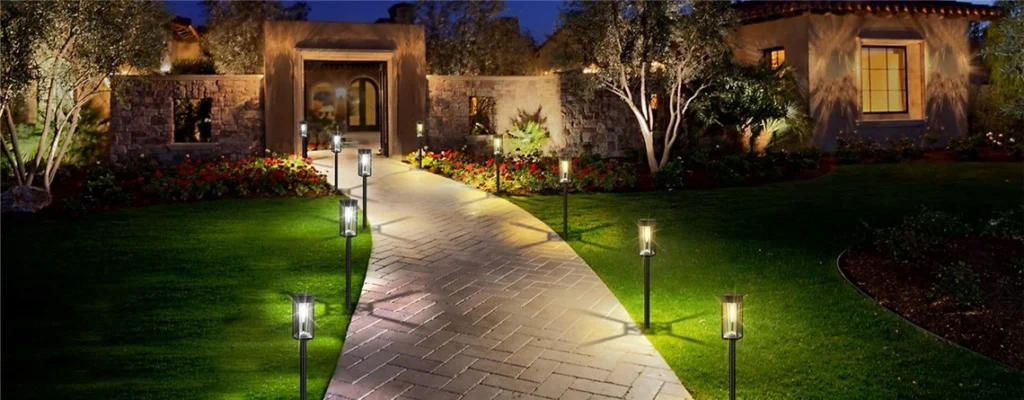
Understanding Solar Garden Lights
Components of Solar Garden Lights
To disassemble a solar garden light effectively, it’s essential to understand its core components:
- Solar Panel: A photovoltaic panel (monocrystalline, polycrystalline, or amorphous) converts sunlight into electricity. Typically located at the top, it’s often covered by plastic or glass.
- Rechargeable Battery: NiMH (Nickel-Metal Hydride) or Li-ion (Lithium-ion) batteries store energy. Common sizes include AA or AAA for NiMH and 18500 for Li-ion.
- LED Light Source: Provides energy-efficient lighting, available in warm-white (2700–3000K) or cool-white (5000–6500K). LEDs are often integrated into the circuit board.
- Photosensor: Detects ambient light to turn the light on at dusk and off at dawn. It’s usually near the solar panel.
- Circuit Board: Manages power flow between the panel, battery, and LED. May include a boost converter (e.g., YX8018 chip) to adjust voltage.
- Housing and Mount: Made of plastic, stainless steel, aluminum, or glass, with stakes, wall mounts, or hanging mechanisms. IP ratings (e.g., IP65) indicate weather resistance.
Types of Solar Garden Lights
Different designs affect disassembly:
- Stake Lights: Common for pathways (e.g., GIGALUMI), with a solar panel on top, stake for ground insertion, and a lens covering the LED.
- String Lights: Flexible strands (e.g., Brightech Ambience Pro) with a separate solar panel and battery unit, often wrapped around structures.
- Wall-Mounted Lights: Fixed to surfaces (e.g., LITOM), with compact electronics and mounting hardware.
- Lanterns: Decorative (e.g., TomCare), with hanging or tabletop designs, often featuring glass or resin components.
Why Take Apart Solar Garden Lights?
Disassembly is necessary for:
- Battery Replacement: NiMH batteries degrade after 1–2 years, Li-ion after 2–3 years, requiring replacement to restore solar light functionality.
- Repair: Fix broken wires, corroded contacts, or faulty LEDs to address solar light not working.
- Repurposing: Salvage parts like solar panels or batteries for DIY projects, such as custom lighting or small power systems.
- Cleaning: Access internal components to remove dirt or moisture affecting solar panel efficiency.
Tools and Safety Precautions
Before disassembling, gather these tools:
- Screwdrivers (Phillips, flathead) for screws.
- Pliers or tweezers for small parts or wires.
- Multimeter to test voltage or continuity.
- Soft cloth and rubbing alcohol for cleaning.
- Box cutter or craft knife for glued components.
- Optional: Soldering iron for rewiring, safety goggles for corrosion cleanup.
Safety Tips:
- Turn off the light (if it has a switch) to avoid electrical issues.
- Work in a clean, dry indoor area to prevent water or dirt ingress.
- Handle batteries carefully to avoid short-circuiting or leakage. Dispose of damaged batteries at a recycling center.
- Avoid excessive force to prevent breaking delicate components like solar panels or LEDs.
Step-by-Step Guide to Taking Apart a Solar Garden Light
Disassembly varies by light type and brand, but this general process applies to most solar garden lights. Always check the manufacturer’s manual for specific instructions, as designs differ.
Step 1: Turn Off and Remove the Light
- Switch Off: Locate the on/off switch (if present) and turn it off to prevent battery drain or electrical issues. Some budget lights lack switches, relying on photosensors.
- Remove from Installation:
- For stake lights, gently pull the stake from the ground, twisting to avoid bending. If frozen, pour warm water to loosen soil.
- For wall-mounted lights, unscrew or unclip from mounts, keeping hardware in a labeled bag.
- For string lights, carefully untangle and remove from supports, coiling loosely to prevent wire damage.
- For lanterns, detach from hooks or bases, noting attachment points for reassembly.
- Test Before Disassembly: Cover the photosensor to check if the light works. This helps identify issues (e.g., solar light not working) before opening it.
Step 2: Access the Solar Panel and Battery Compartment
The solar panel and battery are typically housed in the top section of the light.
- Remove the Cover:
- Screws: Look for Phillips or flathead screws on the underside or edges of the top section. Remove them carefully and store in a labeled container.
- Twist-Off Covers: Some lights have plastic or glass covers that twist off (e.g., half a turn counterclockwise). Apply gentle pressure to avoid cracking.
- Glued Components: In budget lights, the panel may be glued. Use a box cutter or craft knife to carefully cut around the edges, avoiding damage to wires or the panel.
- Clips or Tabs: Some lights use snap-on clips. Gently pry with a flathead screwdriver, starting at a seam, to release without breaking plastic tabs.
- Handle with Care: Once open, note how components are assembled for reassembly. Take photos if needed to track wiring or part placement.
Step 3: Remove the Battery
- Locate the Battery Compartment: Usually under the solar panel or in a separate compartment. In stake lights, it’s often in the top section; in string lights, it may be in a control box.
- Remove the Battery:
- For removable batteries (e.g., AA NiMH), slide or pop them out, noting polarity (+/-).
- For soldered batteries (common in dollar-store lights), leave them in place unless you’re skilled with a soldering iron, as desoldering risks damaging the circuit.
- Inspect for Damage: Check for corrosion, leakage, or swelling. Clean corroded terminals with a drop of vinegar and a toothbrush, wearing goggles to avoid splashing. Dry thoroughly.
- Store Safely: Place batteries in a plastic bag or container to prevent contact with metal objects during storage.
Step 4: Access the Circuit Board and LED
- Locate the Circuit Board: Found near the battery or under the solar panel, it connects the panel, battery, and LED. It may be secured with screws or clips.
- Remove the Circuit Board:
- Unscrew or unclip carefully, noting wire connections. Avoid pulling wires, as they may be fragile.
- If soldered, use a soldering iron to detach wires, heating just long enough to melt solder to avoid damaging components.
- Access the LED: The LED is often on the circuit board or connected via wires. In stake lights, it’s below the lens; in string lights, LEDs are along the strand. Gently detach if modular, or leave in place if soldered.
- Check the Photosensor: Usually a small component near the solar panel. Test by covering it to see if the LED activates. Clean with a soft cloth if dirty.
Step 5: Remove Additional Components (If Needed)
- Lens or Cover: Glass or plastic lenses may be clipped or glued. Pry gently with a screwdriver or cut glue with a craft knife.
- Stake or Mount: Detach stakes by unscrewing or pulling apart. For wall-mounted lights, remove mounting brackets, keeping screws organized.
- Wires: For string lights, note wire connections to the control box. If repurposing, label wires to track polarity.
Step 6: Inspect and Clean Components
- Solar Panel: Wipe with a damp cloth and mild soap to remove dirt, then dry thoroughly. For cloudy panels, apply clear nail polish or lacquer to restore clarity, improving solar panel efficiency.
- Battery Compartment: Clean contacts with vinegar and a toothbrush if corroded. Ensure no moisture remains.
- Housing and Lens: Wash with soapy water to remove grime. Avoid abrasive cleaners that could scratch surfaces.
- Wires and Circuit Board: Check for broken or corroded wires. Re-solder if necessary, using lead-free solder and rosin flux to prevent oxidation.
-4-1024x400.webp)
Step 7: Reassemble or Store Components
- Reassemble for Repair:
- Replace batteries or faulty parts (e.g., LEDs, wires).
- Reconnect wires, ensuring correct polarity. Secure the circuit board and cover, reapplying silicone sealant if needed to prevent water ingress.
- Test by charging in sunlight for 8–12 hours and covering the photosensor to check LED functionality.
- Store for Repurposing:
- Store components in a labeled plastic bin with silica gel packets to prevent moisture damage.
- Keep batteries separate to avoid corrosion.
- Repurpose Parts: Solar panels can power small DIY projects, batteries can be reused in other devices, and LEDs can be integrated into custom lighting setups.
Product-Specific Considerations
- Budget Stake Lights ($5–$15): Often glued, requiring careful cutting to access components. Batteries are typically AA NiMH, easily replaceable.
- String Lights: Control boxes are clipped or screwed, but wires are fragile. Handle carefully to avoid breaking.
- Wall-Mounted Lights: Compact designs may have hidden screws under rubber plugs. Check IP ratings (e.g., IP65) to assess re-sealing needs.
- Lanterns: Glass components are delicate; pad during storage. Hanging mechanisms may need unscrewing.
Challenges and Solutions
- Glued Components: Use a box cutter or heat gun (low setting) to loosen glue without damaging parts.
- Spiky Washers or Pegs: Some lights use metal washers or plastic pegs to lock components. Use pliers to pull washers or carefully cut pegs, noting reassembly may require glue or tape.
- Soldered Batteries: If unskilled in soldering, replace the entire unit or consult a professional to avoid circuit damage.
- Corrosion: Persistent corrosion may require fine-grit sandpaper (e.g., 400-grit) after vinegar cleaning. Replace batteries if corrosion is severe.
Tips for Success
- Document the Process: Take photos or notes during disassembly to aid reassembly.
- Check Manufacturer Instructions: Some lights have unique designs. Refer to manuals or online guides for brand-specific tips.
- Test Components: Use a multimeter to check panel voltage (~2–5V in sunlight) or wire continuity to diagnose issues.
- Seal After Reassembly: Apply silicone paste to seals to enhance weatherproof solar lights and prevent water ingress.
- Repurpose Creatively: Salvaged panels can charge small devices, and LEDs can be used in art projects, as seen in DIY communities.
Real-World Insights
- Reddit User Experience: A user struggled with spiky metal washers locking a solar panel, resolving it by carefully prying with a screwdriver, though reassembly required tape.
- Instructables Case: A DIYer disassembled dollar-store lights, finding soldered NiMH batteries. They left them in place and reused the panel for a custom charger.
- Bitpott Feedback: Users report budget lights often have glued panels, requiring a craft knife for access, but premium models use screws for easier disassembly.
Conclusion
Taking apart a solar garden light is a straightforward process with the right tools and approach, enabling battery replacement, repairs, or creative repurposing. By understanding components like the solar panel, battery, and LED, and following a systematic disassembly process—turning off, removing covers, and handling parts carefully—users can maintain or repurpose their lights effectively. Challenges like glued components or soldered batteries can be overcome with patience and proper techniques, such as cutting glue or using a soldering iron. Whether you’re fixing a solar light not working, enhancing solar panel efficiency, or salvaging parts for DIY projects, this guide equips you to handle solar garden lights with confidence. With proper care, these eco-friendly fixtures can continue to illuminate your outdoor spaces sustainably for years.

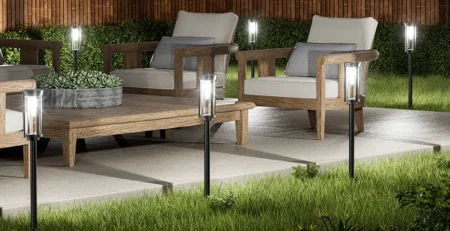

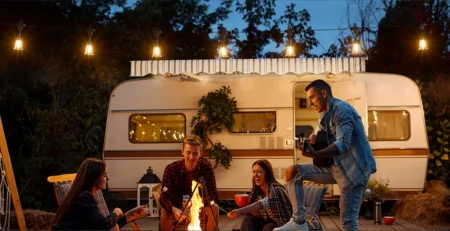
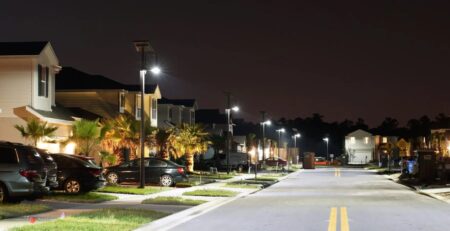
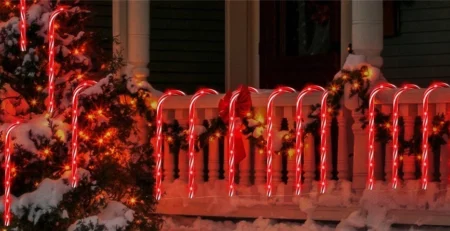
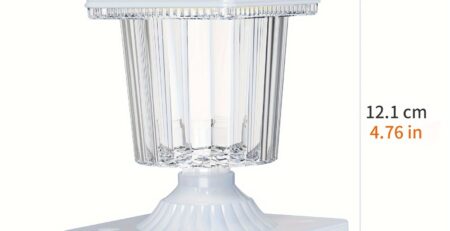
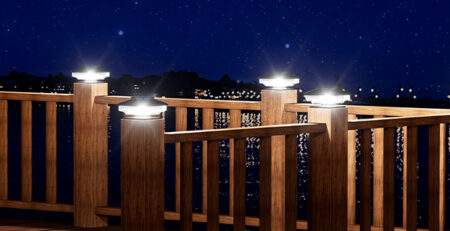

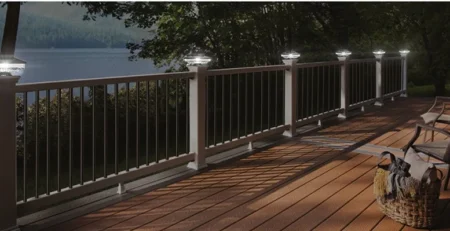
-2-450x231.webp)
Leave a Reply